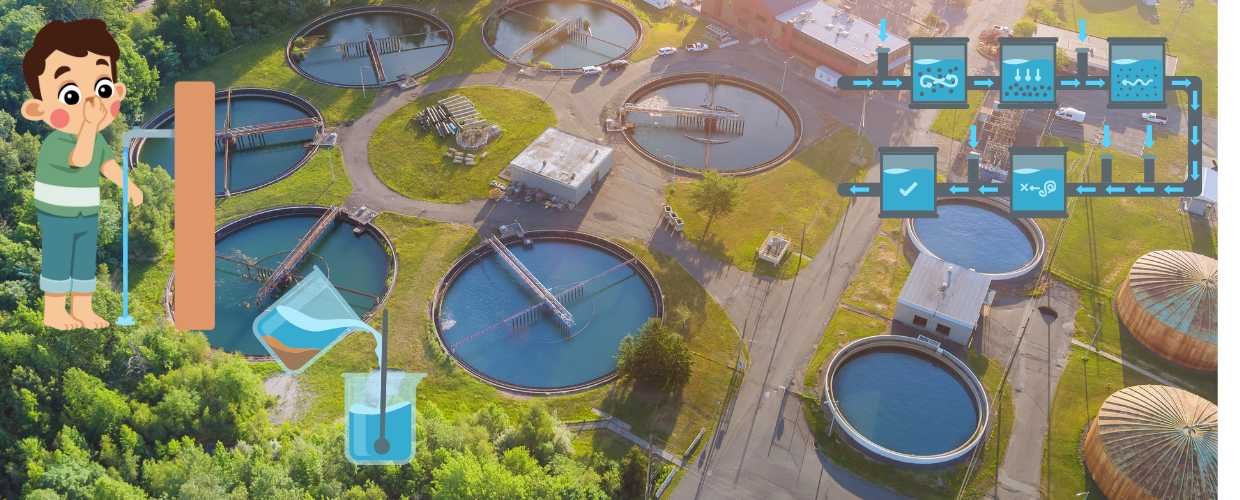Water is the essence of life, a vital resource that sustains all living beings on Earth. Access to clean and safe drinking water is a fundamental human right and a cornerstone of public health. However, as industrialization and urbanization have advanced, so too have the challenges associated with ensuring a continuous supply of pure water. In this comprehensive article, we will explore the critical process of water purification, its importance, methods, and technological advancements that make it possible to deliver safe and clean water to billions of people worldwide.
The Importance of Water Purification
Water purification is crucial for safeguarding public health and the environment.
Disease Prevention
Contaminated water can harbor harmful microorganisms, such as bacteria, viruses, and parasites, which can cause waterborne diseases like cholera, dysentery, and typhoid. Purifying water effectively eliminates these threats, reducing the incidence of such diseases. This aspect of water purification is particularly critical in regions with inadequate sanitation and hygiene practices.
Chemical Removal
Water sources can be tainted with various chemicals, including heavy metals, pesticides, and industrial pollutants. Purification processes can remove or reduce the concentration of these chemicals, preventing long-term health issues and environmental damage. Removing chemicals like lead, arsenic, and mercury from drinking water is essential to safeguard human health and ecosystems.
Improved Taste and Odor
Purification enhances the taste and odor of water by removing impurities and undesirable compounds. This makes it more appealing for consumption and encourages people to drink adequate water, promoting overall health. Better-tasting water also reduces the reliance on sugary beverages, contributing to public health by reducing sugar intake.
Environmental Protection
Discharging untreated or poorly treated wastewater into rivers and lakes can harm aquatic ecosystems and biodiversity. Proper water purification ensures that the effluent released into the environment meets safety standards and minimizes ecological damage. This aspect of water purification aligns with broader environmental conservation efforts.
Methods of Water Purification
Water purification involves physical, chemical, and biological processes to remove contaminants and make water safe for consumption. The following are common methods used in water treatment.
Screening and Sedimentation
The first step in water purification is often screening to remove large debris and particles. After this, sedimentation allows smaller, suspended particles to settle at the bottom of a tank, where they can be removed. This initial mechanical filtration reduces the load on subsequent treatment stages.
Coagulation and Flocculation
Chemicals such as alum or ferric chloride are added to water to create tiny, sticky particles called floc. These floc particles attract and bind with impurities, forming larger, easier-to-remove clumps through flocculation. This chemical process is vital for the removal of suspended particles and turbidity.
Filtration
Water is then passed through various types of filters, such as sand, gravel, or activated carbon, which trap remaining suspended particles, bacteria, and some chemicals. Filtration can be fine or coarse, depending on the desired water quality. It is a critical step in ensuring the physical removal of contaminants.
Disinfection
Water is typically disinfected to kill or inactivate remaining microorganisms. Chlorination, ultraviolet (UV) treatment, and ozonation are common disinfection methods. Chlorine prevents microbial growth in distribution systems, while UV and ozone target many pathogens. Disinfection is the last line of defense against harmful microorganisms.
Desalination
In regions with limited freshwater resources, desalination removes salt and other impurities from seawater or brackish water. This process, often achieved through reverse osmosis, produces freshwater suitable for drinking and irrigation. Desalination technology is a critical solution for water-scarce regions worldwide.
Advanced Technologies
Emerging technologies, such as nanofiltration and advanced oxidation processes, continually improve water purification efficiency. Nanofiltration employs nanoscale filtration membranes to remove even smaller particles and contaminants, while advanced oxidation processes use reactive radicals to break down organic and inorganic pollutants. These innovations are at the forefront of enhancing water treatment effectiveness.
Challenges and Future Trends
Despite significant advancements in water purification, several challenges persist.
Aging Infrastructure
Many water treatment facilities worldwide are outdated and in need of modernization. Investment in infrastructure upgrades is necessary to maintain water quality and address growing water demands. Retrofitting existing facilities with advanced treatment technologies can enhance their performance.
Emerging Contaminants
Detecting new contaminants, like pharmaceuticals and personal care products, requires continuous research and adaptation of water treatment processes. Advanced analytical techniques and monitoring systems are crucial to identifying and addressing emerging water quality concerns.
Climate Change
Changing climate patterns can impact the availability and quality of water sources. Preparing for these changes and ensuring a resilient water supply is essential. Climate-resilient infrastructure and water management strategies are essential for adapting to shifting precipitation patterns and more frequent extreme weather events.
Equity and Access
Ensuring equitable access to safe drinking water remains a global challenge, especially in marginalized communities. Addressing water quality and availability disparities requires a commitment to social and environmental justice and investment in infrastructure and community-based solutions.
Technological Innovations
The future of water purification lies in innovative technologies like graphene-based filters, decentralized treatment systems, and real-time water quality monitoring. These innovations promise more efficient and sustainable water purification solutions. Continuous research and development are essential to scaling these technologies up and making them accessible to communities worldwide.
Conclusion
Water purification is a vital process that protects public health, preserves the environment, and sustains life on Earth. Advances in technology and a deeper understanding of water chemistry continue to drive improvements in water treatment processes. As we face new challenges like emerging contaminants and climate change, the importance of ensuring access to clean and safe drinking water for all cannot be overstated.
By investing in modern infrastructure, embracing innovative solutions, and promoting responsible water usage, we can ensure that future generations enjoy the benefits of pure and abundant water resources. Water purification is not just a scientific endeavor; it is a fundamental commitment to the well-being of our planet and its inhabitants. Through the collective efforts of communities, governments, and scientists, we can secure a healthier and more sustainable future for all.












